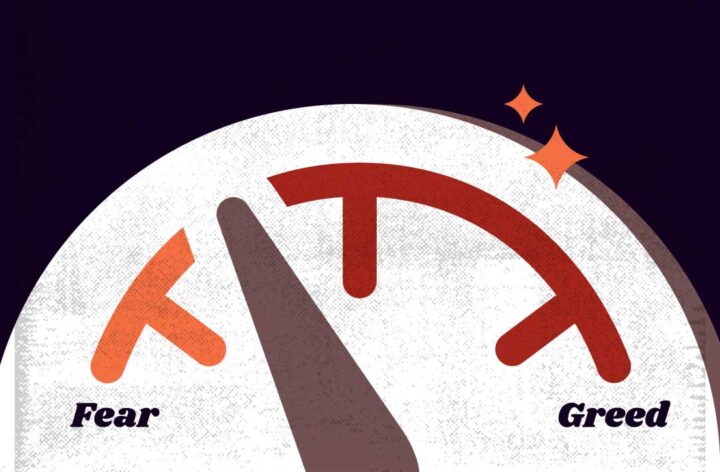Trading: Fear and Greed Index

The Fear and Greed index is a tool used to indicate the current market mood and make short-term forecasts. It is most widely used in scalping and daily trading.
Why Measure the Fear and Greed Index?
The cryptocurrency market has many inexperienced traders, and a characteristic feature of most assets is high volatility. Under such conditions, the actions of market participants are often motivated more by emotion than by cold calculation. Market growth provokes the growth of “greed,” which is based on the fear of missing out. Market decline causes irrational behavior: the mass sell-off of rock-bottom assets. The fear and greed index allows us to look at the market situation and assess the mood of the bulk of traders without unnecessary emotions.
For skilled traders, there are two key indicators:
- Increased “fear” – a good time to enter an asset.
- Increased “greed” – a sign of a coming market correction, a good time to lock in profits.
How Is Fear and Greed Calculated?
The classic market Fear Index was developed by the Chicago Board Options Exchange in 1993 and is called VIX. It reflects a forecast of stock market volatility based on the S&P 500 index options for the coming month.
The methodology was developed by CNNMoney, which formed its own Fear and Greed Index based on seven key market metrics. The CNN index was adapted to the realities of the cryptocurrency market by programmers Gregor Krambs and Victor Tobies. Their index assesses the fear and greed of crypto traders and investors in relation to BTC, which is regarded as an indicator of the market as a whole. The following factors shape the index:
- Volatility (25%). The current BTC price is compared to the average values for the last 30 and 90 days. Higher volatility is a sign of increased “fear” among traders.
- Market momentum / volume (25%). The current market momentum and market volume are compared to the average values of the last 30 and 90 days. An increase in the indicators shows an increase in “greed.”
- Social Media (15%). Social signals on Twitter by topic hashtags are used for analysis. If the measured interactions increase, the market might be greedy.
- Surveys (15%). Every week, the StrawPoll platform conducts surveys with up to 3,000 respondents directly related to crypto trading. Survey participants describe the current market situation and crypto investors’ mood.
- Dominance (10%). Dominance measures how much market capitalization Bitcoin takes up from the share of the entire cryptocurrency market capitalization. The smaller the market volume in this ratio, the higher the “fear” level, as BTC is considered the safest asset.
- Trends (10%). The analysis is performed based on data from Google Trends. It refers not only to the general interest in BTC but also to the growth of popularity of specific queries. For example, the growth of interest in the query “manipulations of the price of Bitcoin” is a clear indicator of “fear.”
There are plans to launch indexes for large altcoins, expand social network analysis to specialist threads on Reddit, and other index improvements in the near future. It’s important to note that the Fear and Greed Index is just one of the indicators to check when analyzing the current market situation. The keyword is “current” – this index is only suitable for short-term forecasting.











